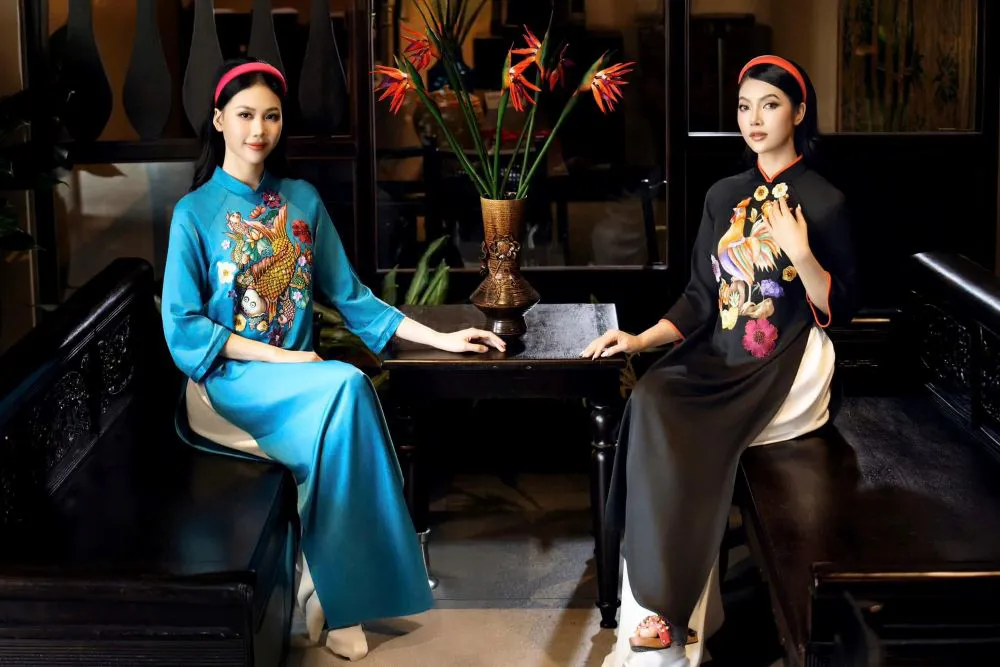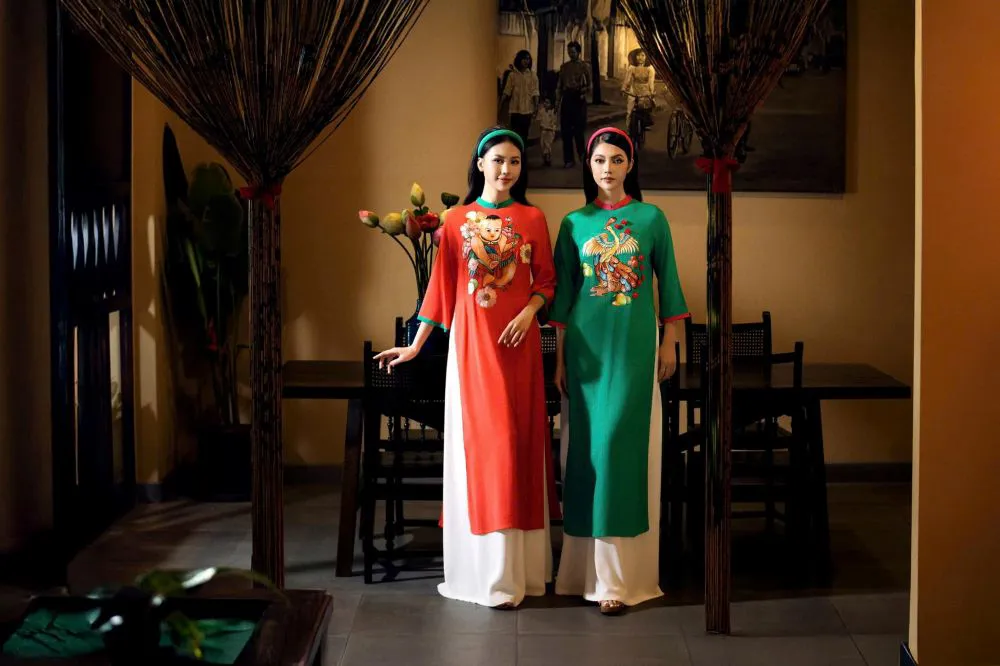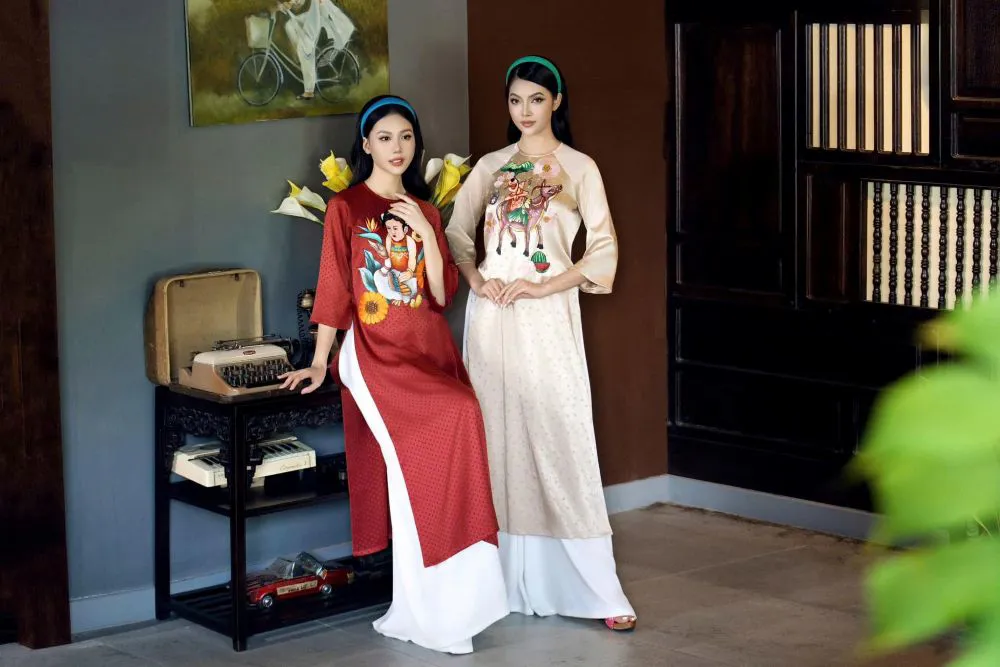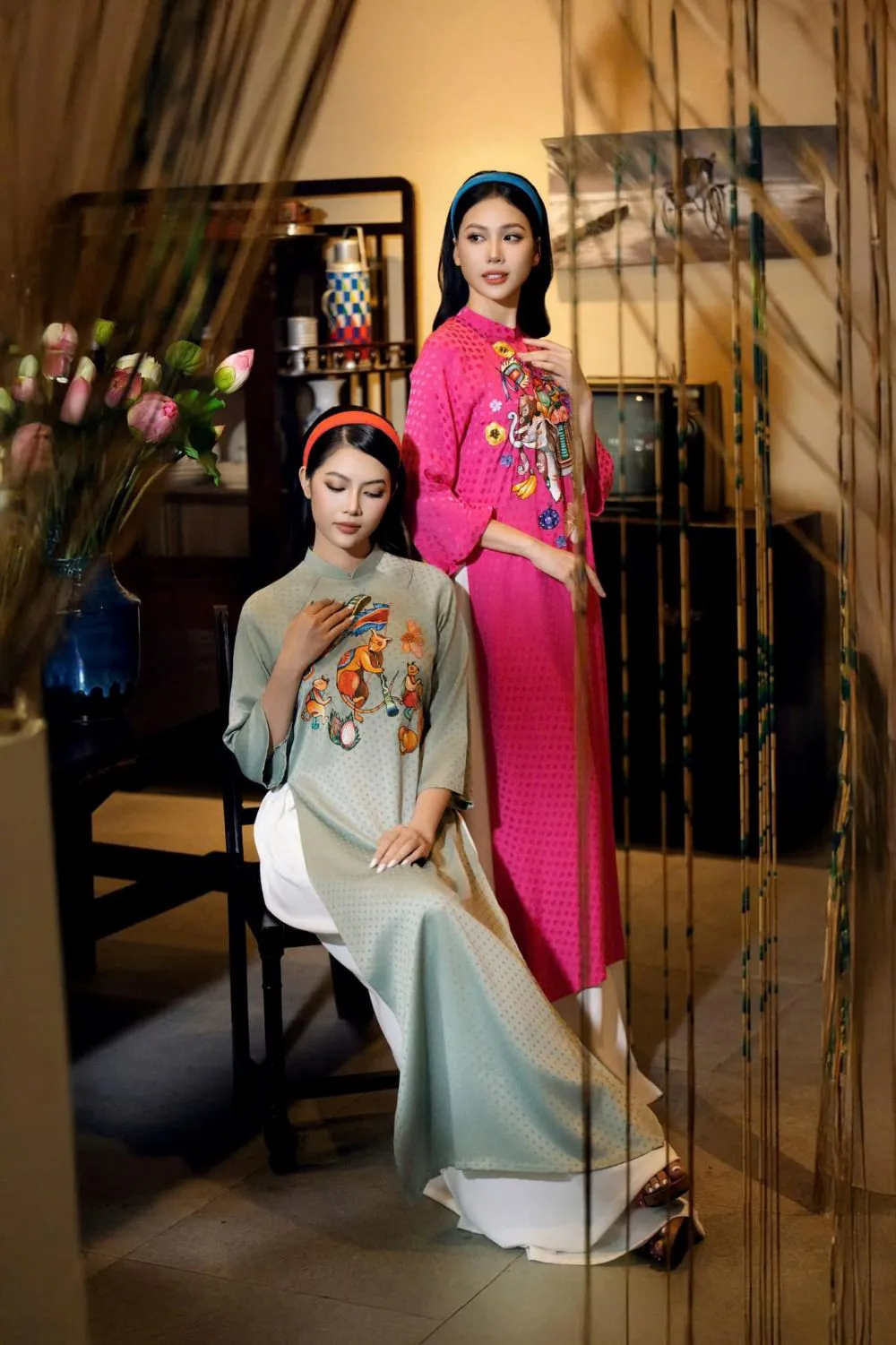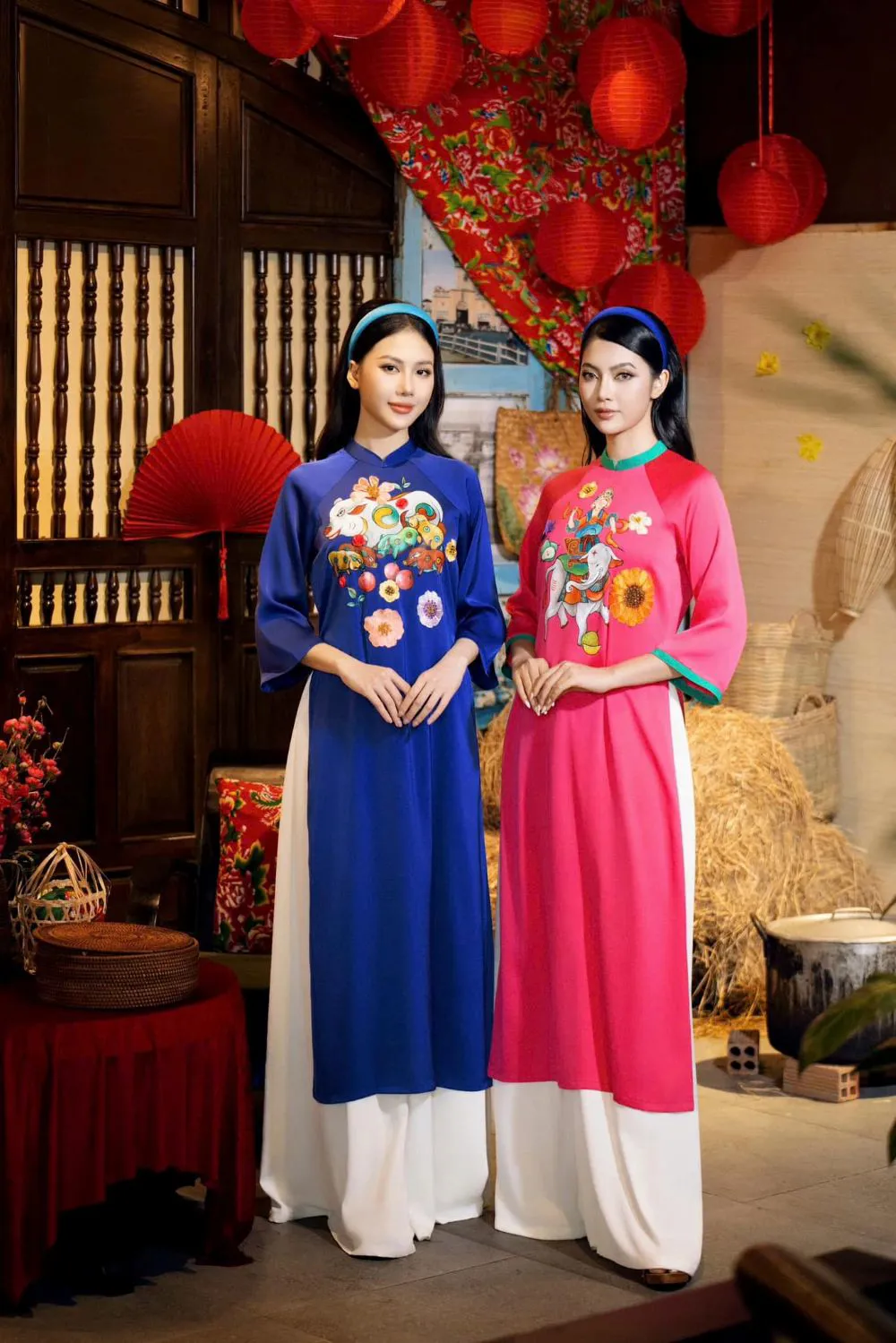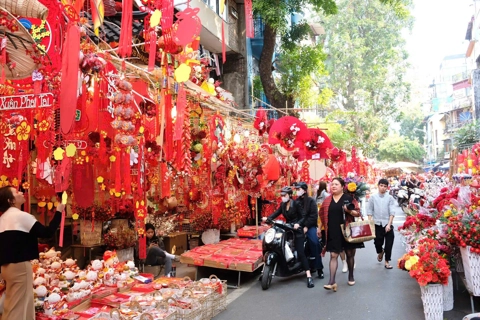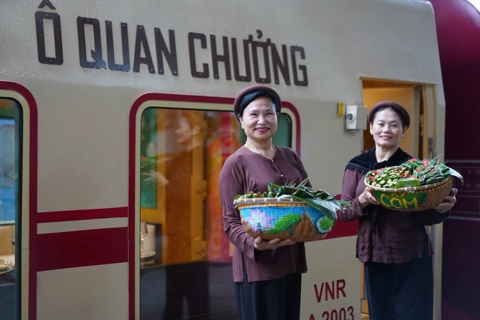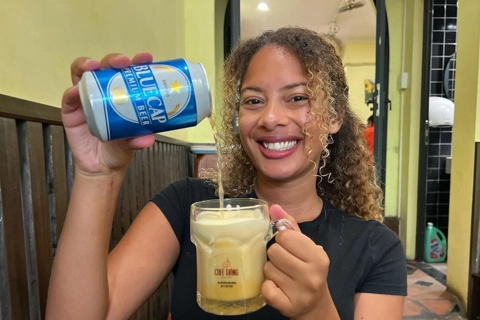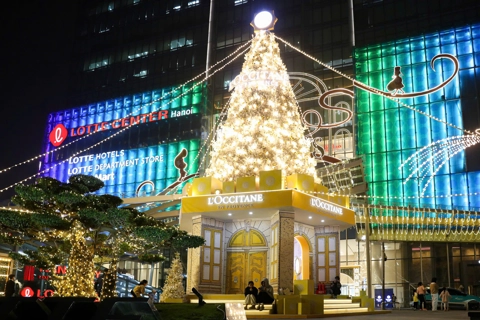Admiring Dong Ho folk paintings on traditional ao dai
The harmonious blend of tradition and modernity enhances Vietnamese women's beauty, especially during Tet.
Designer Vo Viet Chung has unveiled his 2025 Tet's Ao dai collection, titled "Spring Paintings," inspired by the iconic Dong Ho paintings.
| The Dong Ho paintings of carp (left) and rooster and roses (right) on traditional Vietnamese ao dai. Photo courtesy of Vo Viet Chung |
Chung explained that his new collection is deeply influenced by well-known Dong Ho works that symbolize fortune and prosperity, such as “Vinh hoa - phu quy” (Wealth and Honor), “Dam cuoi Chuot” (Mouse Wedding), “Lon dan” (Pig Herd), “Lon am duong” (Yin-Yang Pig), “Ga trong hoa hong” (Rooster and Roses), and “Chan trau thoi sao” (Children Herding Buffalo, Playing Flute), among others.
"Dong Ho paintings are hand-painted on the ao dai," revealed the designer, "while additional elements such as flowers and fruits are hand-embroidered to create stunning highlights."
| The paintings of Wealth and Honor (left) and Peacock (right) |
The fusion of traditional ao dai with the famous Dong Ho folk paintings adds to the aesthetic appeal, while representing a creative blend of traditional culture and modern artistry. Each piece is crafted with great attention to detail, reflecting the designer's passion and bringing the paintings to life as unique works of wearable art.
Vo Viet Chung has chosen Vietnamese and Japanese silk for the materials. The soft texture is ideal for Vietnam's climate, and its graceful properties enhance the figure and show the beauty of Vietnamese women.
When it comes to color, the designer has chosen vibrant shades of red, pink, blue, beige, black and moss green to make a bold statement during the spring days.
| The Wealth and Honor Painting (left) and Herding Buffalo, Playing the Flute Painting (right) |
Originating from the Dong Ho Village in Thuan Thanh District, located in the northern Vietnamese province of Bac Ninh, Dong Ho folk paintings are usually printed on do or poonar paper, which easily absorbs liquid colors and dries quickly. The paper is coated with a mixture of glue and tiny fragments of diep, a type of mussel shell. This mixture not only brightens the paper but also adds a subtle sheen, which is why the paper is often called giay diep or shell paper.
The ao dai with Dong Ho paintings entitled Mouse Wedding (left) and Ha Ba Trung or Trung Sisters (left)
|

